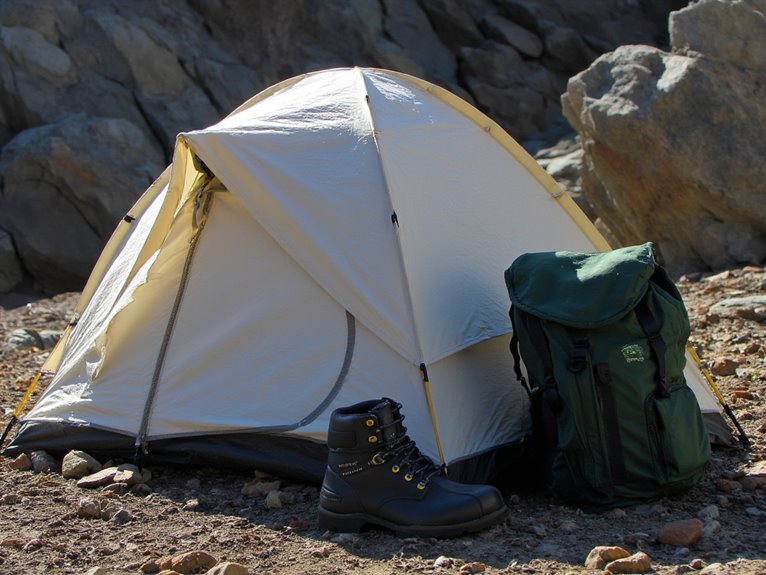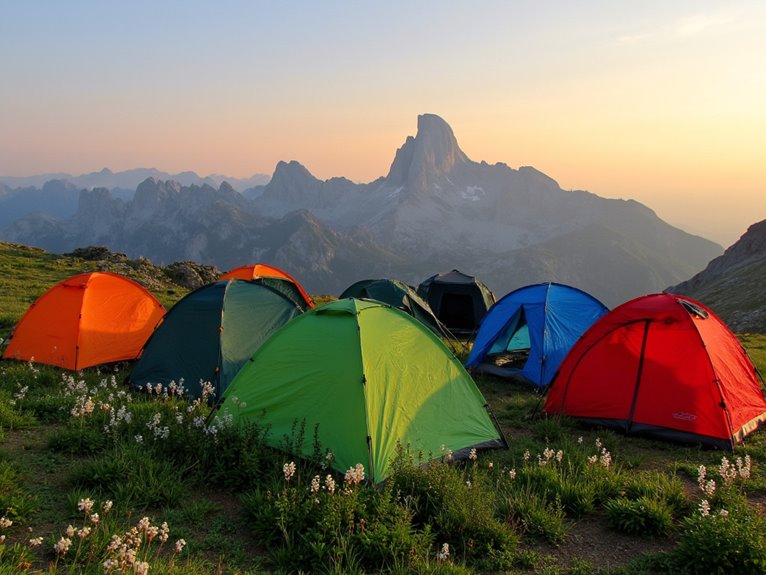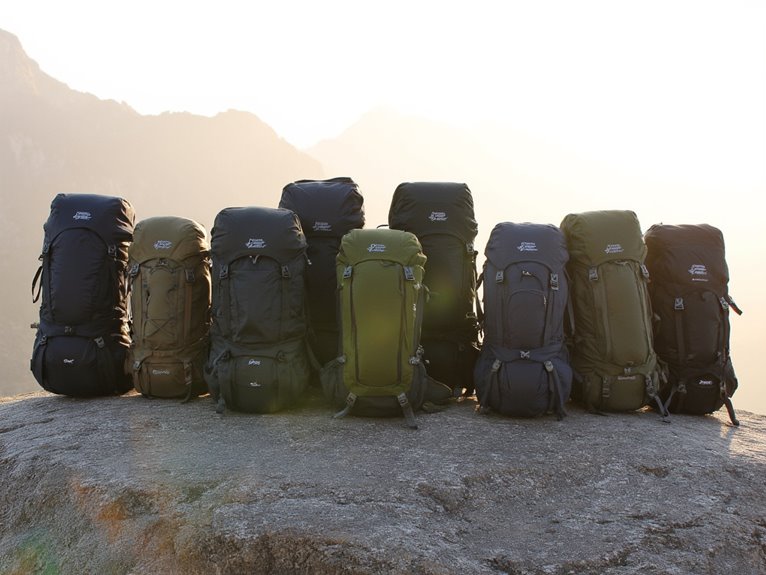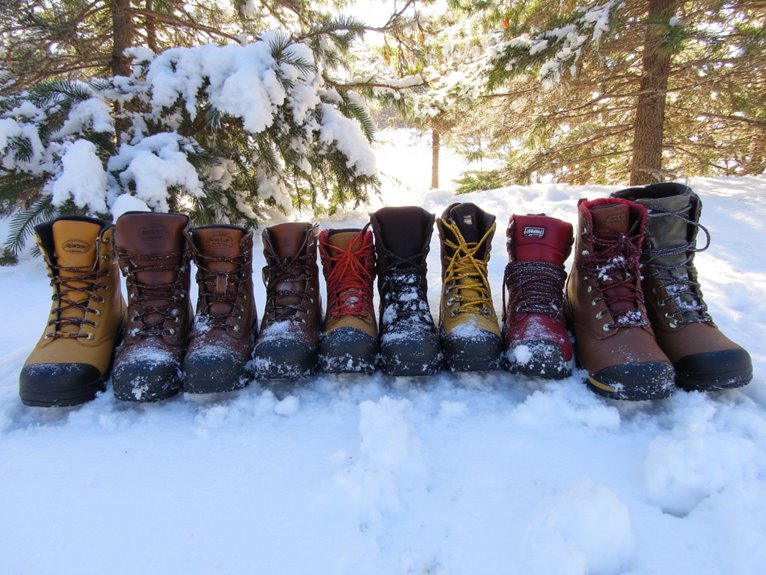What Is the Best Way to Pack a Bear Canister?
To pack a bear canister efficiently and safely, assess your gear and needs, separating scented items from food and other items. Organize food and scented items into categories, using small airtight containers or Ziploc bags to keep them fresh and protected. Use compression bags wisely to reduce gear volume, packing heavy items at the bottom and maximizing vertical space. Secure small items safely, and perform a final check to verify all items are properly stowed and secured. By following these steps, you'll be well on your way to mastering the art of packing a bear canister; further attention to detail will guarantee a successful trip.
We are supported by our audience. When you purchase through links on our site, we may earn an affiliate commission, at no extra cost for you. Learn more. Last update on 18th December 2025 / Images from Amazon Product Advertising API.
Assessing Your Gear and Needs
Before packing a bear canister, you must take stock of your gear and assess your specific needs for the trip, considering factors such as the length of your trip, the type of food you plan to bring, and the specific bear canister requirements for your destination.
This includes evaluating the size and capacity of your bear canister, as well as the types of items you need to store.
Consider the weight and bulk of your gear, and prioritize essential items such as food, cooking fuel, and personal hygiene items.
Make a list of the items you plan to pack to ensure you have a comprehensive understanding of your gear needs.
Organizing Food and Scented Items
When packing a bear canister, organizing food and scented items is vital to guarantee a safe and successful backcountry experience.
To achieve this, it's essential to separate scented items, such as toothpaste and soap, from food and other items to prevent attracting unwanted wildlife.
Separate Scented Items
Carefully separating scented items from the rest of your backpack's contents is essential to prevent attracting unwanted wildlife.
This includes not only food but also personal hygiene items, toothpaste, lip balm, and any other fragrant substances.
Keep these items in airtight containers or zip-top bags to contain the scent.
Store them in a designated area of your backpack, away from clothing and other gear.
Consider designating a specific compartment or pocket for scented items to maintain organization and ease of access.
Food Storage Strategies
Organize food and scented items into categories, such as breakfast, lunch, and dinner, to facilitate easy access and minimize rummaging through your backpack.
This strategy guarantees that you can quickly locate the items you need, reducing the risk of attracting unwanted attention from bears.
Within each category, store similar items together, such as grouping all breakfast items like oatmeal, granola, and coffee.
Use small, airtight containers or Ziploc bags to store each item, keeping them fresh and protected from the elements.
Label each container or bag with its contents and the date to confirm you use the oldest items first.
Using Compression Bags Wisely
When using compression bags to pack a bear canister, it is vital to maximize compression to make the most of the limited space.
To achieve this, it is imperative to choose a bag size that is appropriate for the items being compressed, as an oversized bag can lead to wasted space.
Maximum Compression Achieved
By strategically incorporating compression bags into your packing routine, you can substantially reduce the volume of your gear, maximizing the capacity of your bear canister.
This is achieved by compressing clothing, sleeping bags, and other bulky items, allowing you to fit more essentials into your canister.
Use compression bags with a high compression ratio to minimize volume.
Pack clothing and sleeping bags in separate compression bags to optimize space.
Roll clothing and sleeping bags before placing them in compression bags to reduce wrinkles and facilitate compression.
Bag Size Matters
Selecting compression bags in a range of sizes helps guarantee that each item is packed efficiently, eliminating wasted space and allowing you to make the most of your bear canister's capacity.
By using multiple bag sizes, you can tailor the compression to the specific item, providing a snug fit and minimizing air pockets.
This approach also enables you to prioritize items based on importance and accessibility.
For instance, smaller bags can be used for essentials like first aid kits and repair tools, while larger bags can accommodate bulkier items like clothing and sleeping gear.
Packing Heavy Items First
Heavy items, such as food and cooking gear, should be placed at the bottom of the bear canister to provide a stable base and prevent shifting during transport. This guarantees that the canister remains upright and balanced, reducing the risk of damage or loss during transit.
When packing heavy items, consider the following:
- Prioritize dense items: Place the heaviest items, such as canned goods or cooking pots, at the bottom of the canister to create a stable foundation.
- Distribute weight evenly: Balance heavy items on either side of the canister to prevent it from tipping over.
- Leave space for padding: Reserve some space around heavy items for padding materials, like clothes or soft fabrics, to absorb shocks and prevent damage.
Maximizing Vertical Space
Once the heavy items are securely positioned, the next step is to maximize the vertical space within the bear canister by strategically arranging smaller items.
Start by placing smaller, lighter items like clothing, toiletries, and first aid kits near the top of the canister. These items can be rolled or folded to fit snugly around the larger items, making the most of the available space.
Consider stacking smaller items like snacks, electronics, or books vertically to optimize the vertical space. By arranging these items thoughtfully, you can create a compact and organized packing system that makes the most of the bear canister's capacity.
Securing Small Items Safely
With the vertical space within the bear canister efficiently utilized, attention can now turn to guaranteeing that small items are safely secured to prevent them from shifting during transport or attracting unwanted wildlife. Small items, such as toiletries, electronics, and snacks, can cause chaos if not properly secured.
To confirm small items remain organized and secure, consider the following:
- Place small items in sealed plastic bags or airtight containers to prevent leakage or spills.
- Use the canister's built-in compartments or dividers to separate and store small items.
- Pack small items in a designated 'catch-all' pouch or bag to keep them contained and easily accessible.
Final Check and Closure
Before sealing the bear canister, perform a thorough inspection to verify all items are properly stowed and secured to prevent shifting or loss during transport.
Check that all food and scented items are stored in airtight containers and that no loose items are left inside the canister.
Confirm that all straps and buckles are secure and that the canister is properly latched.
Double-check that the canister is not over- or under-packed, as this can compromise its integrity.





